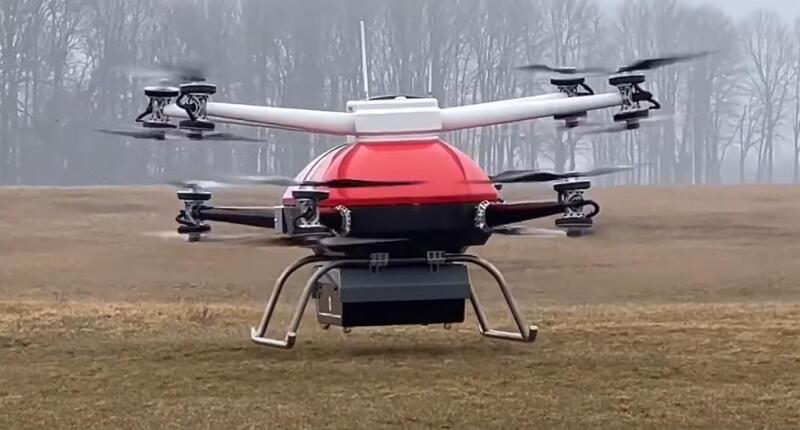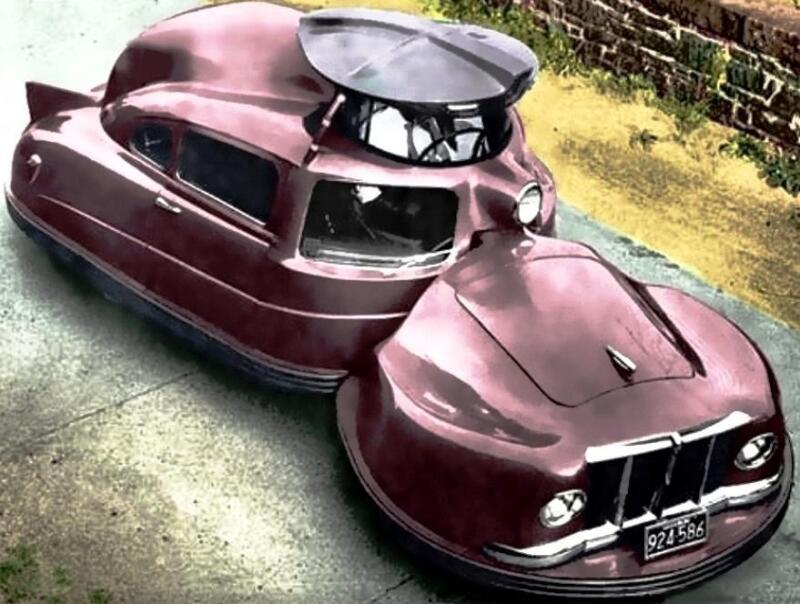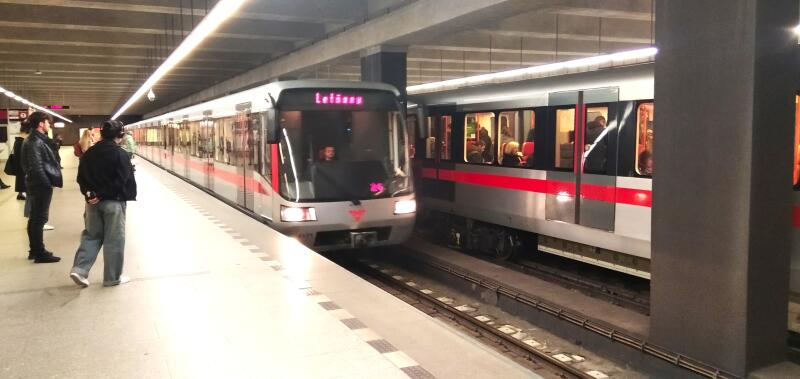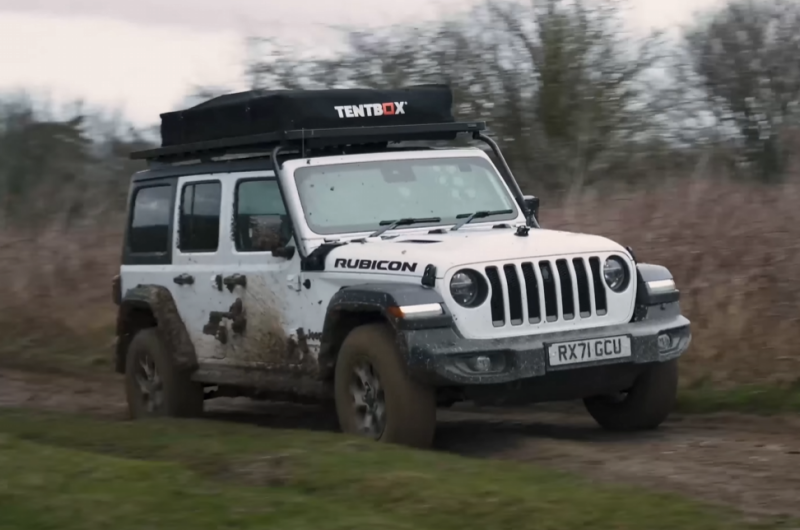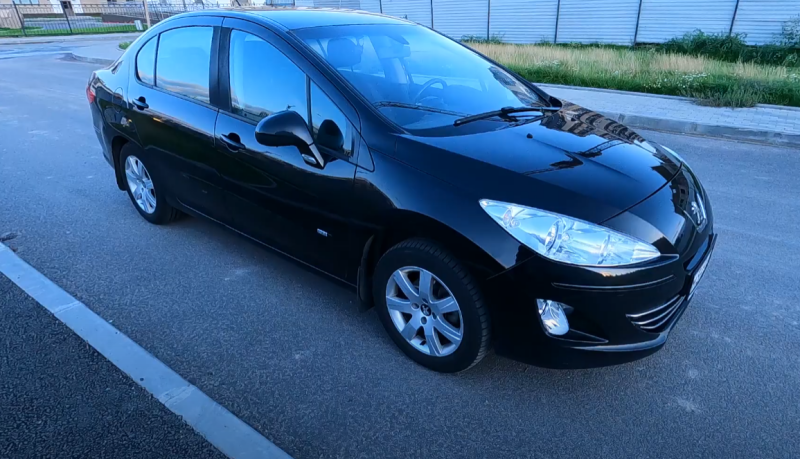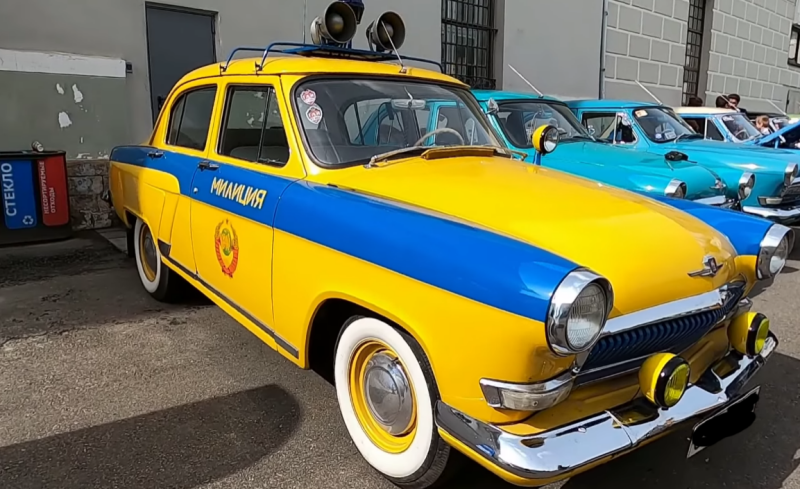Don’t forget: in our huge country there are many settlements that can sometimes only be reached through the sky. And flying a plane for a small shipment of correspondence or medicine is expensive. This is where drones come to the rescue. Any observant person has probably noticed that UAVs come in different types, even if only in appearance and control method.
 To control the flight of a heavy drone, a specially trained operator is needed. Photo: YouTube.com
To control the flight of a heavy drone, a specially trained operator is needed. Photo: YouTube.comProfessional versions of this type of transport can resemble a mini-plane or a small helicopter. But there is another version of the layout, which is discussed below.
copters
These are the most popular drones - vertical take-off aircraft. They differ from each other primarily in the number of propellers. What difference does it make whether there are three, four or more? The most common devices that we see on TV or in person are with four main rotors. Moreover, such a number of propellers is often found both on children's toys and professional designs. But where did copters even come from?
A bit of history
The first more or less successful experiments with devices with screws on beams spaced from the center were carried out in the early 20s of the last century. The authors of the inventions, independently of each other, were E. Emichen (France) and G. Botezat (America). Each of them imagined a manned vehicle with propellers placed on separate arms extending from the center. The entire system was driven by one internal combustion engine, so there was a complex transmission. Both devices rose to a height of 5-15 m, and Emishen’s model managed to fly 1,1 km. But everything was limited to testing and things did not go further for certain reasons:
✅ complex transmission reduced the reliability of the device, which often broke down
✅ the lack of a stabilization system made control extremely problematic
✅ the overall design turned out to be overly bulky
✅ the idea of helicopters and the invention of the swashplate diverted attention from copters
These devices were remembered in the 50s: the same Botezat proposed a new version of the machine - the VZ-7 model. It showed good results, but did not go into production due to unsatisfactory performance parameters. It must be said: all the devices listed above were manned. The main problem was poor stabilization - all engines must rotate at exactly the same speed. This became possible only with the advent of computerized control systems, i.e. in the XNUMXst century.
 The original purpose of copters is photography. Photo: YouTube.com
The original purpose of copters is photography. Photo: YouTube.comCopter drones in the form in which we are accustomed to seeing them began to appear in the early 2000s. It’s hard to say who was the first to launch a drone into the sky, but in 2006 German models from the company MikroKopter went into production. On board they had a gyroscope, a controller that ensured the same speed of rotation of the propellers, and a barometer to determine altitude. Later, the UAV was equipped with a GPS device. After that, the spread of drones around the world was rapid.
 Today, drones deliver cargo (Russian Hi-Fly Cargo drone with medicines). Photo: YouTube.com
Today, drones deliver cargo (Russian Hi-Fly Cargo drone with medicines). Photo: YouTube.comAt first they were used as toys, then they began to conduct aerial photography, then the military and various civilian organizations involved in the delivery of goods became interested in the devices. At the same time, many models of copters were created, differing in the number of engines and propellers.
Tri- and quadcopters
The first option has a design different from “multi-rotor” UAVs. It uses 3 engines with propellers, one of which is placed on a moving beam-platform powered by a servo drive. By changing the angle, the operator forces the device to turn. Such designs are characterized by low reliability, sensitivity to wind, and the need to install powerful engines. Therefore, tricopters are not very common, but they have their fans: perhaps due to the airplane-helicopter principle of movement in the air.
 Tricopters are becoming increasingly rare (model Cheerson CX-33W, average price: RUB 5453). Photo: YouTube.com
Tricopters are becoming increasingly rare (model Cheerson CX-33W, average price: RUB 5453). Photo: YouTube.comAnother thing is a quadcopter. This is the most common option. Here two propellers rotate in one direction, the other in the opposite direction. This makes it possible to abandon the swashplate and allows the drone to stay in the air more confidently. Such designs are characterized by compactness and a certain compromise between thrust-to-weight ratio and cost. The best use for such devices is video and photography of objects from a height. It is also worth noting the maintainability of quadcopters and the availability of spare parts associated with the prevalence of this type of UAV.
Hexa- and octocopters
They are distinguished by stability, large dimensions and weight. The original purpose of their creation was to be able to use professional heavy cameras on gimbals. However, later devices with six or eight propellers began to be used for delivering goods. Such devices behave confidently in the air and are not afraid of gusts of wind. If one of the engines fails, the octocopter will be able to get to the take-off site without any problems.
 Hexa means six (screws) in Greek. Photo: YouTube.com
Hexa means six (screws) in Greek. Photo: YouTube.comIt is clear that the number of kilometers covered decreases with the increase in the number of electric motors. On the other hand, the greater the total power of the engines, the heavier the load the device will lift. Summarizing the above, we can conclude about the advantages of devices (they are called multicopters) with six or eight propellers (engines):
✅ reliability (failure of one motor will not lead to disaster)
✅ high load capacity (for professional models – up to 30 kg)
✅ stability in flight
✅ large ceiling (you can’t knock the camera down with a stone), providing a panoramic view when shooting
✅ better functionality
Multicopters have two main disadvantages: relatively large dimensions, weight and high cost. Here you can add worse maneuverability. It’s also worth mentioning the connection between flight time and payload. The greater the latter, the fewer minutes or hours the device can spend in the air.
 The octocopter has 8 propellers and the same number of motors. Photo: YouTube.com
The octocopter has 8 propellers and the same number of motors. Photo: YouTube.comThere is nothing new here - the same can be said about airplanes. The main area of application for hexo- and octocopters is cargo delivery. Another option is to use drones to pollinate crops. By the way, special devices are produced for this “business”, which are beginning to be popular among farmers. If you use a UAV with an internal combustion engine, the time of continuous operation of the drone increases (as does the cost).
Buy a copter for business
One of the problems hindering the spread of drones is cost. We are not talking about toys or devices for amateur filming, but about more serious devices. For example, a DJI Agras T30 UAV for pollinating crops costs an average of 1 million 540 thousand rubles. The price is considerable, like a car. But such a hexacopter with an internal combustion engine will stay in the air for at least 2 hours, and the chemical tank will hold 25 liters of liquid. If you buy for three or four, it’s still possible. At least more economical than hiring a plane.
 DJI Agras T30 drone in action. Photo: YouTube.com
DJI Agras T30 drone in action. Photo: YouTube.comIs there something cheaper for “private use”? If, for example, you decide to send a friend a small gift or something he needs. For example, the Xiaomi Fimi X8 SE 2022 V2 Combo electric quadcopter is suitable.
 Xiaomi Fimi X8 SE takes off. Photo: YouTube.com
Xiaomi Fimi X8 SE takes off. Photo: YouTube.comThe UAV is capable of filming in HDR resolution with 4K quality, including at night. The flight range is 10 km, the UAV will stay in the air for up to 35 minutes. The weight of the delivered cargo is 0,2 kg, the average price is 61 thousand rubles.
Summary
Modern multicopters are a promising direction in the development of air transport. But so far, the only widespread models are small in size, used for filming and are inexpensive. As a way out of this situation - kit kits for self-assembly of UAVs.
 You can assemble the agrodron yourself - you can see the container for chemicals from below. Photo: YouTube.com
You can assemble the agrodron yourself - you can see the container for chemicals from below. Photo: YouTube.comMore serious copters, designed to deliver cargo weighing several kilograms, are expensive - it’s cheaper to drive there, or even walk (hire a courier). An exception is cases of flights to hard-to-reach places. But once upon a time, cars, and then airplanes, were also considered expensive fun...
